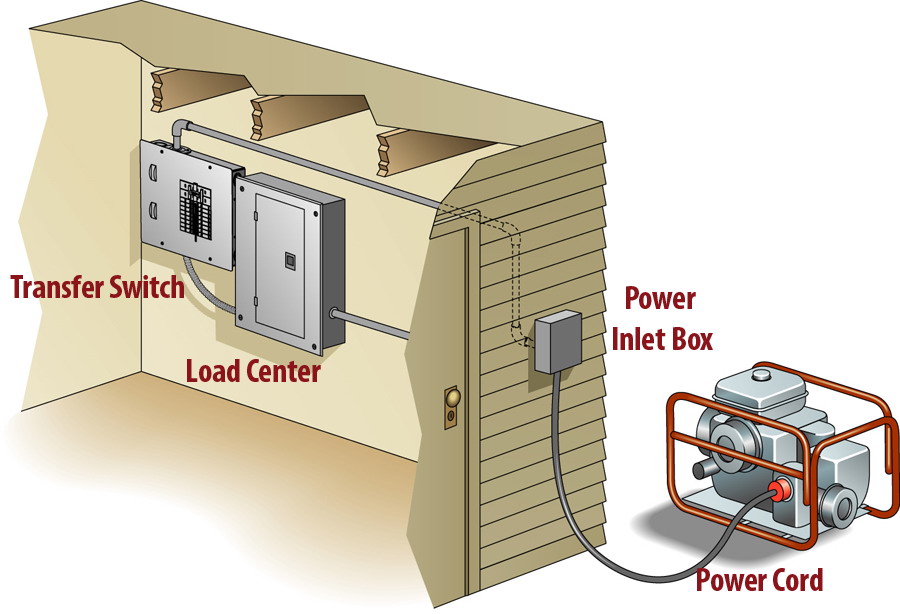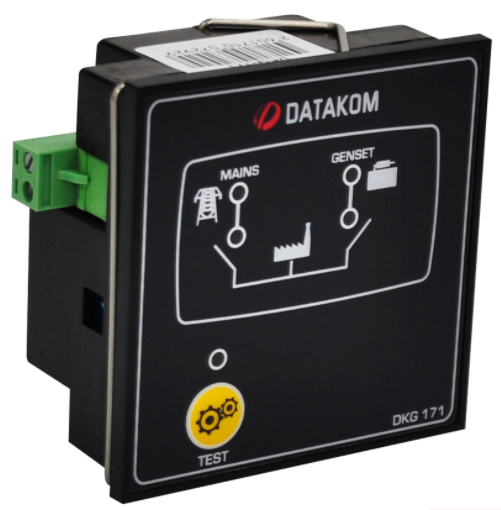Documents
WHAT IS IMPORTANT TO KNOW ABOUT AUTOMATIC TRANSFER SWITCHES?
An automatic transfer switch (ATS) is a device that automatically transfers a power supply from its primary source to a backup source when it senses a failure or outage in the primary source.
When a failure occurs in a primary power system, the ATS invokes a standby power source, such as an uninterruptible power supply. An ATS can also start up more long-term backup power systems, such as local diesel generators, to run electric equipment until utility power is restored.
ATS prices may vary from tens to thousand dollars depending on type, features and options. Thus, it is highly important to know how to find the right one for a certain application.
There are many different types of ATS devices having various design, connection diagrams, work modes, switching principles, features and options that will be shortly described below.

Design
It normally consists of two main parts that could be assembled in same device case or separately:
- Electronic ATS controller for mains phase monitoring. It controls a load-switching device and sends a remote start/stop signal to a generator controller.

-
Load switching device (contactor pair, motorized changeover switch, powerful semiconductors). Depending on type, it can switch power from one source to another within 0.01- 5 seconds. Such devices can have 1-4 switching poles and different power values.

Operation of a transfer switch
As well as transferring the load to the backup generator, an ATS may also command the backup generator to start, based on the voltage monitored on the primary supply. The transfer switch isolates the backup generator from the electric utility when the generator is on and providing temporary power. The control capability of a transfer switch may be manual only, or a combination of automatic and manual.
For example, in a home equipped with a backup generator and an ATS, when an electric utility outage occurs, the ATS will tell the backup generator to start. Once the ATS sees that the generator is ready to provide electric power, the ATS breaks the home's connection to the electric utility and connects the generator to the home's main electrical panel. The generator supplies power to the home's electric load, but is not connected to the electric utility lines. It is necessary to isolate the generator from the distribution system to protect the generator from overload in powering loads in the house and for safety, as utility workers expect the lines to be dead.

When utility power returns for a minimum time, the transfer switch will transfer the house back to utility power and command the generator to turn off, after another specified amount of "cool down" time with no load on the generator.
A transfer switch can be set up to provide power only to critical circuits or to entire electrical (sub) panels. Some transfer switches allow for load shedding or prioritization of optional circuits, such as heating and cooling equipment. More complex emergency switchgear used in large backup generator installations permits soft loading, allowing load to be smoothly transferred from the utility to the synchronized generators, and back; such installations are useful for reducing peak load demand from a utility.
![DATAKOM-DKG173-Three-phase-connection-diagram.resize1[2].jpg DATAKOM-DKG173-Three-phase-connection-diagram.resize1[2].jpg](/upload/medialibrary/768/DATAKOM_DKG173_Three_phase_connection_diagram.resize1_2_.jpg)
ATS Controller Types
-
Single-phase and 3-phase monitoring ATS controllers. The single-phase monitoring controllers may cause problems in 2-3 phase networks while switching from one power source to another having an unmonitored phase voltage missing.
-
Analog type ATS controllers and digital microprocessor ATS controllers. Analog controllers could monitor phase voltage availability only, but not acceptable value ranges and frequency. This type has no or minimal configurable user settings available. Digital microprocessor ATS controllers as the most advanced type of ATS controllers have many user configurable settings including switching delays, voltage, frequency and current range monitoring, etc.
-
DC powered, AC powered and AC/DC powered ATS controllers. The DC powered controllers must have an external uninterruptible DC power supply (DC rechargeable battery + battery charger). While the AC powered ATS controllers are powered directly from main and backup power sources without any needs of an addional DC power supply. The AC/DC powered ATS controllers combine the above mentioned AC and DC types, but have some limited features without DC power supply connected.
-
ATS controllers can be front panel mounted and DIN rail types. The difference is where it must be mounted: inside of panel or on front panel side.
![3291931179184832[1].png 3291931179184832[1].png](/upload/medialibrary/e68/3291931179184832_1_.png)
ATS Switches Transition Types
- Open transition type. An open transition transfer switch is also called a break-before-make transfer switch. A break-before-make transfer switch breaks contact with one source of power before it makes contact with another. It prevents backfeeding from an emergency generator back into the utility line, for example. One example is an open transition automatic transfer switch (ATS). During the split second of the power transfer the flow of electricity is interrupted. Another example is a manual three position switch or circuit breaker, with utility power on one side, the generator on the other, and "off" in the middle, which requires the user to switch through the full disconnect "off" position before making the next connection.
-
Closed transition type. A closed transition transfer switch (CTTS) is also called a make-before-break transfer switch. A typical emergency system uses open transition, so there is an inherent momentary interruption of power to the load when it is transferred from one available source to another (keeping in mind that the transfer may be occurring for reasons other than a total loss of power). In most cases this outage is inconsequential, particularly if it is less than 1/6 of a second. There are some loads, however, that are affected by even the slightest loss of power. There are also operational conditions where it may be desirable to transfer loads with zero interruption of power when conditions permit. For these applications, closed transition transfer switches can be provided. The switch will operate in a make-before-break mode provided both sources are acceptable and synchronized. Typical parameters determining synchronization are: voltage difference less than 5%, frequency difference less than 0.2 Hz, and maximum phase angle between the sources of 5 electrical degrees. This means the engine driving the generator supplying one of the sources generally must be controlled by an isochronous governor. It is generally required that the closed transition, or overlap time, be less than 100 milliseconds. If either source is not present or not acceptable (such as when normal power fails) the switch must operate in a break-before-make mode (standard open transition operation) to ensure no backfeeding occurs. Closed transition transfer makes code-mandated monthly testing less objectionable because it eliminates the interruption to critical loads which occurs during traditional open transition transfer. With closed transition transfer, the on-site engine generator set is momentarily connected in parallel with the utility source. This requires getting approval from the local utility company. Typical load switching applications for which closed transition transfer is desirable include data processing and electronic loads, certain motor and transformer loads, load curtailment systems, or anywhere load interruptions of even the shortest duration are objectionable. A CTTS is not a substitute for a UPS (uninterruptible power supply); a UPS has a built-in stored energy that provides power for a prescribed period of time in the event of a power failure. A CTTS by itself simply assures there will be no momentary loss of power when the load is transferred from one live power source to another.
![Closed-Transition-Transfer-Switch-23[1].jpg Closed-Transition-Transfer-Switch-23[1].jpg](/upload/medialibrary/dad/Closed_Transition_Transfer_Switch_23_1_.jpg)
- Soft loading type. A soft-loading transfer switch (SLTS) makes use of a CTTS, and is commonly used to synchronize and operate onsite generation in parallel with utility power, and to transfer loads between the two sources while minimizing voltage or frequency transients.
ATS Switches Mechanical Types
-
Solenoid based switches. Such switches are activated via electromagnetic solenoid movement.
![400V-50_60Hz-Automatic-Changeover-Switch[2].png 400V-50_60Hz-Automatic-Changeover-Switch[2].png](/upload/medialibrary/629/400V_50_60Hz_Automatic_Changeover_Switch_2_.png)
-
Motorized switches. This type is activated via electric motor and gear.
![400V-50_60Hz-Automatic-Changeover-Switch[2].png 400V-50_60Hz-Automatic-Changeover-Switch[2].png](/upload/medialibrary/ae0/400V_50_60Hz_Automatic_Changeover_Switch_2_.png)
-
Contactor based switches. It consists of two contactors having mechanical and electrical interlocking to prevent both power sources from being connected to each other.
![Set-with-mechanical-and-electrical-interlocking[1].png Set-with-mechanical-and-electrical-interlocking[1].png](/upload/medialibrary/76e/Set_with_mechanical_and_electrical_interlocking_1_.png)
ATS Switches Electrical Types
-
Circuit breaker based (class CB). Such switches use circuit breakers with an external operating linkage as the switching mechanism. The linkage operates two circuit breakers in tandem, closing one while opening the other.
-
Switch-disconnectors (class PC). This type is based on 2 static contact groups alternately closing by a switching mechanism.
-
Static transfer switch (STS). A static transfer switch uses power semiconductors such as Silicon-controlled rectifiers (SCRs) to transfer a load between two sources. Because there are no mechanical moving parts, the transfer can be completed rapidly, perhaps within a quarter-cycle of the power frequency. Static transfer switches can be used where reliable and independent sources of power are available, and it is necessary to protect the load from even a few power frequency cycles interruption time, or from any surges or sags in the prime power source.

 Products for Electric Generators
Products for Electric Generators
